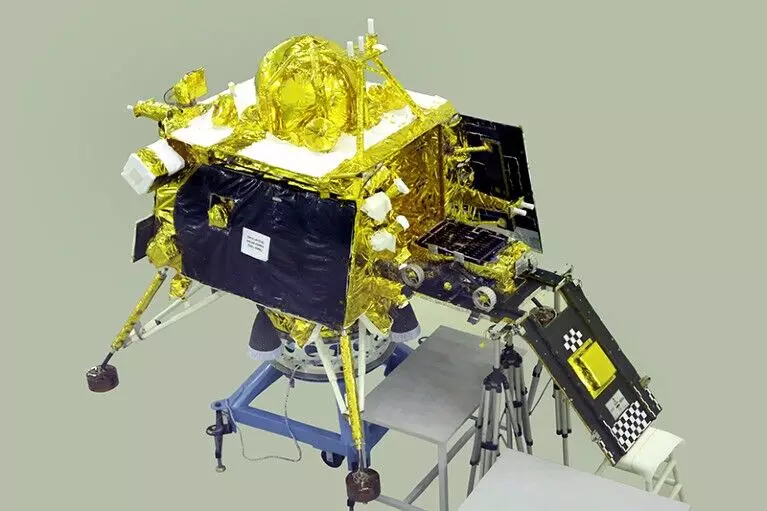Chandrayaan-3 Lands on What May Be the Moon's Oldest Craters, Say Researchers
Chandrayaan-3 was discovered to have landed within a crater approximately 160 km in diameter, appearing in images as a nearly semi-circular formation.
Chandrayaan 3

India's lunar mission, Chandrayaan-3, has potentially landed in one of the Moon's oldest craters, according to scientists who analysed images from the mission and various satellites.
The crater, formed during the Nectarian period approximately 3.85 billion years ago, represents one of the earliest periods in the Moon's geological history. This finding comes from a team that includes researchers from the Physical Research Laboratory and the Indian Space Research Organisation (ISRO) in Ahmedabad.
S. Vijayan, an associate professor in the Planetary Sciences Division at the Physical Research Laboratory, stated, "The Chandrayaan-3 landing site presents a unique geological setting where no other missions have ventured. The images captured by the mission's Pragyan rover are the first on-site photographs of the Moon at this latitude, providing insights into its evolutionary history."
A crater is formed when an asteroid collides with the surface of a larger celestial body, such as a planet or moon, resulting in displaced material known as "ejecta."
According to scientists, the images from Chandrayaan-3 reveal significant insights into the Moon's evolution. They indicated that one-half of the crater is buried beneath material ejected from the South Pole-Aitken basin, the largest and most well-known impact basin on the Moon.
An impact basin is defined as a large, complex crater with a diameter exceeding 300 km, while a standard crater measures less than 300 km in diameter.
Vijayan, the corresponding author of the study published in the journal Icarus, explained, “The formation of ejecta is similar to throwing a ball into the sand, where some of the sand is displaced outward into a small pile.” He further noted, “When an impact basin forms, the surface material is ejected. A larger impact basin will excavate subsurface materials from greater depths.”
In this instance, Chandrayaan-3 landed within a crater approximately 160 km in diameter, which was detected in the images as a nearly semi-circular structure.
The researchers noted that this likely indicates that one-half of the crater is 'degraded' due to being buried under ejecta from the South Pole-Aitken basin.
“Additionally, near the landing site, we observed ejecta or material 'thrown out' from a more distant impact crater. Images captured by the Pragyan rover revealed that similar material was present at the landing site,” Mr Vijayan explained.
The Pragyan rover was deployed on the lunar surface by the Vikram lander as part of the Chandrayaan-3 mission.
“Combined, the images from the mission and satellites indicate that the Chandrayaan-3 landing site contains material deposited from various regions of the Moon,” he added.
Launched by ISRO in Bengaluru, the mission achieved a soft landing near the Moon's south pole on August 23, 2023, with the landing site later named Shiv Shakti Point on August 26, 2023.
To validate their findings, the researchers also studied other craters formed during the Nectarian period and discovered that most were severely degraded and modified, reinforcing their discovery of a buried crater. This finding also suggests weathering effects caused by exposure to space, commonly referred to as 'space weathering.'

